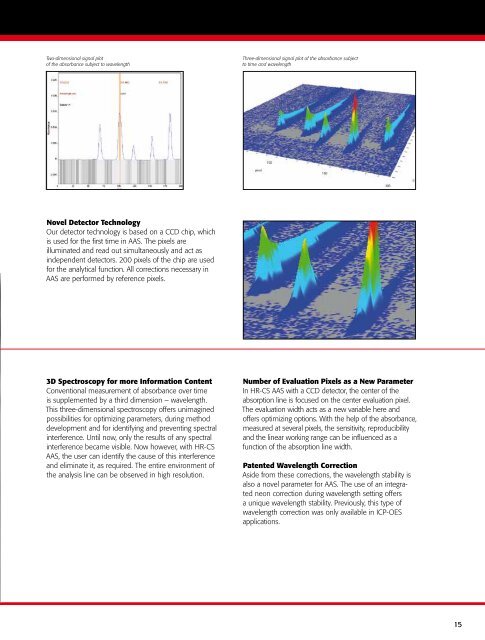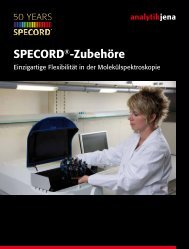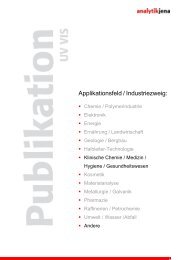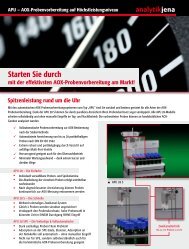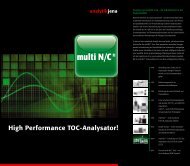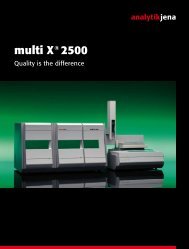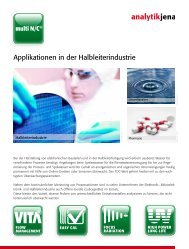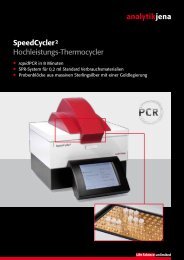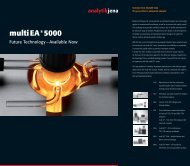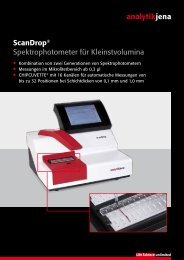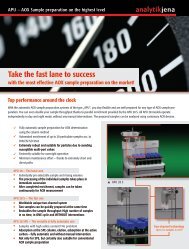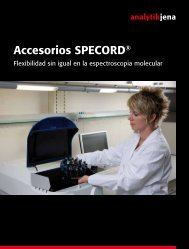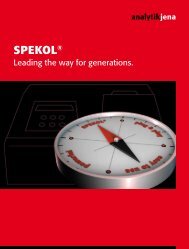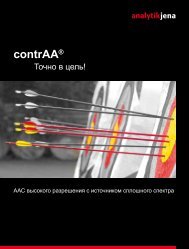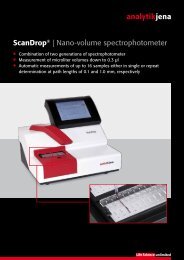contraa® - Analytik Jena AG
contraa® - Analytik Jena AG
contraa® - Analytik Jena AG
You also want an ePaper? Increase the reach of your titles
YUMPU automatically turns print PDFs into web optimized ePapers that Google loves.
Two-dimensional signal plot<br />
of the absorbance subject to wavelength<br />
Novel Detector Technology<br />
Our detector technology is based on a CCD chip, which<br />
is used for the first time in AAS. The pixels are<br />
illuminated and read out simultaneously and act as<br />
independent detectors. 200 pixels of the chip are used<br />
for the analytical function. All corrections necessary in<br />
AAS are performed by reference pixels.<br />
3D Spectroscopy for more Information Content<br />
Conventional measurement of absorbance over time<br />
is supplemented by a third dimension – wavelength.<br />
This three-dimensional spectroscopy offers unimagined<br />
possibilities for optimizing parameters, during method<br />
development and for identifying and preventing spectral<br />
interference. Until now, only the results of any spectral<br />
interference became visible. Now however, with HR-CS<br />
AAS, the user can identify the cause of this interference<br />
and eliminate it, as required. The entire environment of<br />
the analysis line can be observed in high resolution.<br />
Three-dimensional signal plot of the absorbance subject<br />
to time and wavelength<br />
Number of Evaluation Pixels as a New Parameter<br />
In HR-CS AAS with a CCD detector, the center of the<br />
absorption line is focused on the center evaluation pixel.<br />
The evaluation width acts as a new variable here and<br />
offers optimizing options. With the help of the absorbance,<br />
measured at several pixels, the sensitivity, reproducibility<br />
and the linear working range can be influenced as a<br />
function of the absorption line width.<br />
Patented Wavelength Correction<br />
Aside from these corrections, the wavelength stability is<br />
also a novel parameter for AAS. The use of an integrated<br />
neon correction during wavelength setting offers<br />
a unique wavelength stability. Previously, this type of<br />
wavelength correction was only available in ICP-OES<br />
applications.<br />
15


